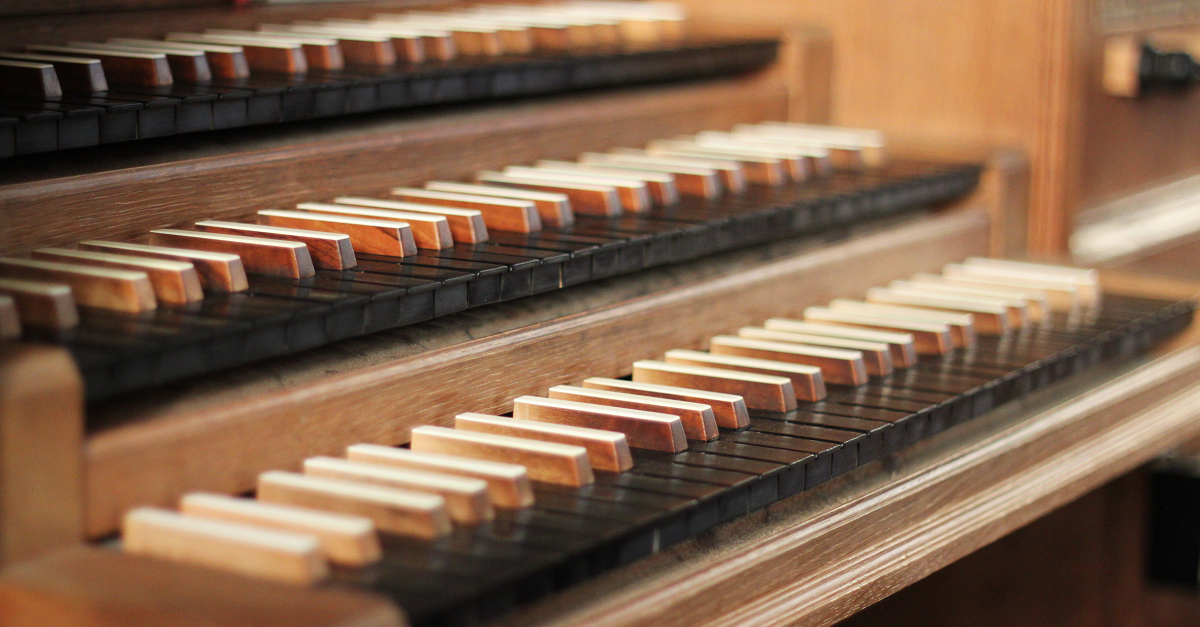
A short guide to the Metzler organ
Trinity’s magnificent Chapel organ is by the distinguished Swiss organ builders Metzler Orgelbau (formerly Metzler und Söhne) and was completed in 1976. It is widely regarded as one of the finest organs of its kind anywhere in the world.
The first organ in the present Chapel was one which had already been in use (in the old chapel of King’s Hall) and was removed into it in 1563. In 1594 Hugh Rose was employed to build a new organ which was completed in 1596. In 1610 John Yorke repaired and improved “the ould orgaine”, and also made “a new chaire orgaine”. In 1615 and again in 1621 Stephen Brittaine did some extra work to the organs. In 1635 Robert Dallam overhauled and repaired it, and was afterwards engaged at an annual salary to tune and look after it. This organ was dismantled in 1643, and it is supposed that some portion of it was rehabilitated at the Restoration in 1660. A new “chaire organ” was built by Thomas Thamar of Peterborough, in 1663.
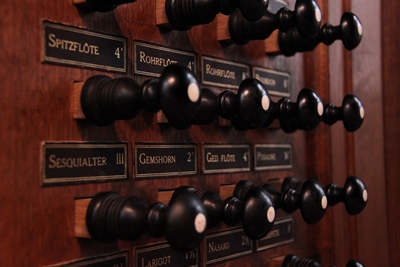
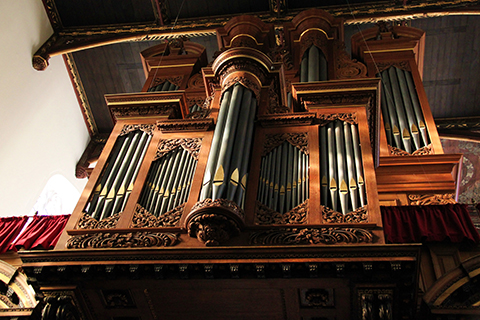
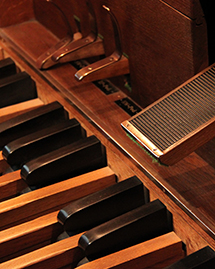
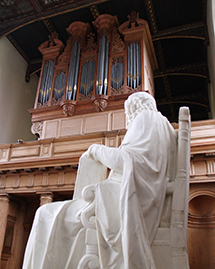
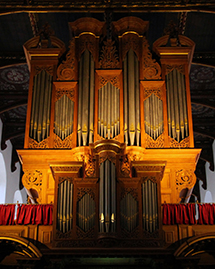
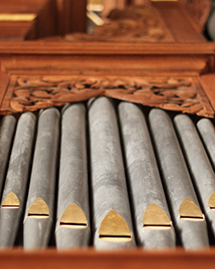
The Thamar organ was repaired in 1686 by the famous Bernhardt Schmidt, known as “Father Smith”, who subsequently built a chaire organ for Trinity in 1694, and in 1706 a second organ, incorporating the first, with magnificent cases which still survive today and are among the best examples of Smith’s work.
The specification of the 1913 organ was drawn up by Dr Alan Gray, the then Organist of the College. This work consisted virtually of the building of a new organ, but incorporating all that was valuable and interesting in the previous one. There were four manuals, CC to C, 61 notes, and two and a half octaves of concave and radiating pedals, CCC to F, 30 notes; 74 speaking stops and 17 couplers etc., making a total of 91 drawstops. The 32’ pipes were clustered in a corner of the Ante-Chapel as they would not fit into the organ loft.
In 1972 the College Council commissioned the Swiss firm Metzler und Söhne to build a mechanical-action instrument based on the surviving pipework, and within the original cases, of the 1694 and 1706 “Father Smith” organs. Pipes from the former Harrison instrument subsequently found their way to St George’s Cathedral, Cape Town and – almost the complete swell division – to a nearby church in Mowbray.
Bernhardt Edskes designed the “new” 42-rank organ which was completed in 1976. Apart from its rich but gentle resonance and its exquisite balance, it is remarkable for its meticulous craftsmanship and durability.
Organ Specification
| HAUPTWERK, C-f’’’ | RÜCKPOSITIV | ||
| 1• Principal | 16 | 13• Principal | 8 |
| 2• Octave | 8 | 14 Gedackt | 8 |
| 3 Hohlflöte | 8 | 15 Octave | 4 |
| 4• Octave | 4 | 16 Rohrflöte | 4 |
| 5 Spitzflöte | 4 | 17 Octave | 2 |
| 6• Quinte | 2 2⁄3 | 18 Gemshorn | 2 |
| 7• Superoctave | 2 | 19 Larigot | 1 1⁄3 |
| 8 Sesquialter | III | 20 Sesquialter | II |
| 9 Cornett | IV | 21 Scharf | III |
| 10 Mixtur | IV-V | 22 Dulcian | 8 |
| 11 Trompete | 8 | Tremulant | |
| 12 Vox Humana | 8 | ||
| SCHWELLWERK | PEDAL | ||
| 23 Viola | 8 | 34• Principal | 16 |
| 24 Suavial | 8 | 35 Subbass | 16 |
| 25 Rohrflöte | 8 | 36 Octavbass | 8 |
| 26 Principal | 4 | 37 Bourdon | 8 |
| 27 Gedacktflöte | 4 | 38 Octave | 4 |
| 28 Nasard | 2 2⁄3 | 39 Mixtur | V |
| 29 Doublette | 2 | 40 Posaune | 16 |
| 30 Terz | 1 3⁄5 | 41 Trompete | 8 |
| 31 Mixtur | IV | 42 Trompete | 4 |
| 32 Fagott | 16 | ||
| 33 Trompete | 8 | • Father Smith ranks | |
| Tremulant | COUPLERS: R-H S-H H-P R-P S-P | ||
Further information

For a full history of the organ in Trinity College Chapel, please read the long guide.